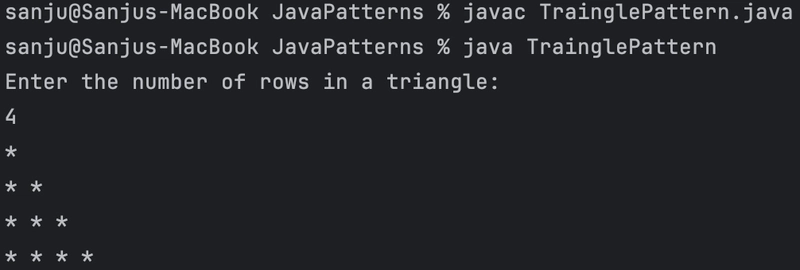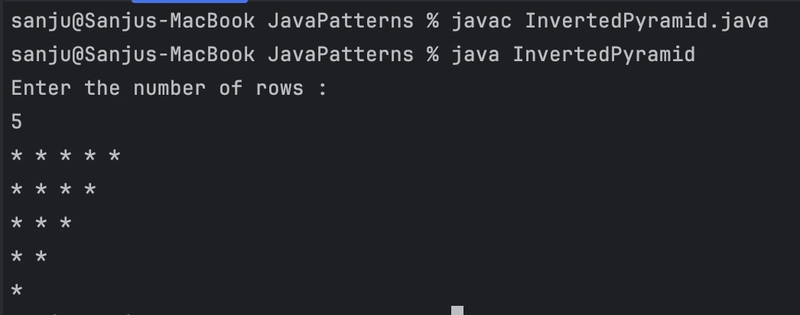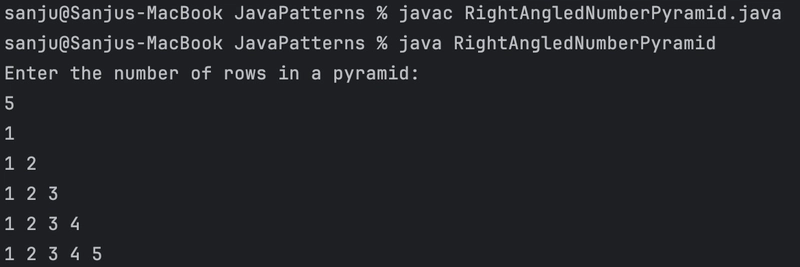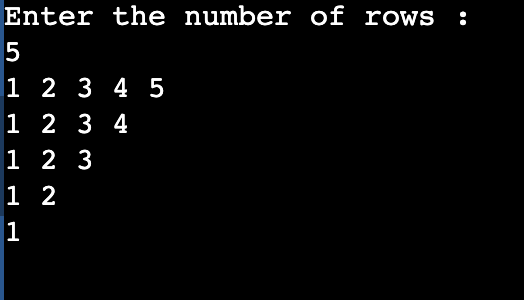Java Pattern Printing: A Developer's Guide
Pattern printing is a great way to improve logic-building skills in Java. It's widely used in coding interviews, competitive programming, and as a fundamental exercise to understand loops and conditional structures. In this blog, we'll explore some of the most common and interesting pattern problems, with explanations and Java code implementations. Square Pattern: A square pattern is one of the simplest patterns, where the same character or number is printed in a grid format. The key idea behind this pattern is using two nested loops: The outer loop controls the rows. The inner loop controls the columns and prints the character in each row. This is useful for understanding the basics of nested loops. Right-Angled Triangle Pattern: This pattern builds a right-angled triangle using increasing rows of symbols. The number of symbols in each row is equal to the row index. The outer loop runs for the total number of rows, while the inner loop prints the increasing count of symbols. It helps in understanding incremental loop structures. Inverted Pyramid Pattern: n this pattern, we start with the maximum number of symbols in the first row, decreasing in each subsequent row. The outer loop runs from the maximum row count down to 1. The inner loop ensures that each row has fewer symbols than the previous one. It helps in practicing decremental looping techniques. Right-Angled Number Pyramid 1: This pattern is a variation of the right-angled triangle but uses numbers instead of symbols. The numbers increase with each row, providing an easy way to understand number-based pattern printing. It's helpful for working with number sequences in nested loops. Right-Angled Number Pyramid 2: This is another numeric pyramid but prints numbers in increasing order, forming a right-angled shape. The outer loop controls the number of rows. The inner loop ensures that numbers in each row increase progressively. This enhances logical understanding of number-based patterns. Inverted Number Pyramid: This pattern is the inverted form of the numeric pyramid. The outer loop runs in decreasing order. The inner loop prints numbers based on the row index. It is an excellent way to practice decrementing loops and number manipulation.

Pattern printing is a great way to improve logic-building skills in Java. It's widely used in coding interviews, competitive programming, and as a fundamental exercise to understand loops and conditional structures.
In this blog, we'll explore some of the most common and interesting pattern problems, with explanations and Java code implementations.
Square Pattern:
A square pattern is one of the simplest patterns, where the same character or number is printed in a grid format. The key idea behind this pattern is using two nested loops:
- The outer loop controls the rows.
- The inner loop controls the columns and prints the character in each row.
This is useful for understanding the basics of nested loops.
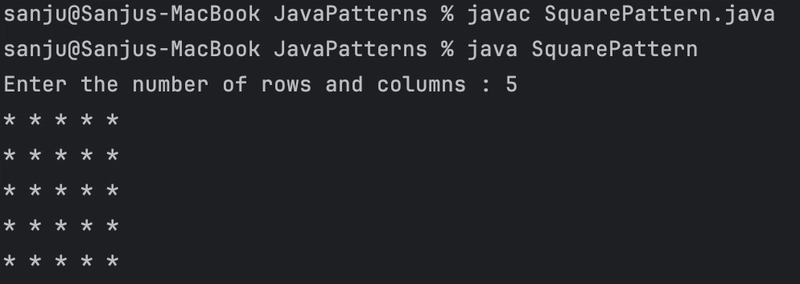
Right-Angled Triangle Pattern:
This pattern builds a right-angled triangle using increasing rows of symbols.
- The number of symbols in each row is equal to the row index.
- The outer loop runs for the total number of rows, while the inner loop prints the increasing count of symbols.
It helps in understanding incremental loop structures.
Inverted Pyramid Pattern:
n this pattern, we start with the maximum number of symbols in the first row, decreasing in each subsequent row.
- The outer loop runs from the maximum row count down to 1.
- The inner loop ensures that each row has fewer symbols than the previous one.
It helps in practicing decremental looping techniques.
Right-Angled Number Pyramid 1:
This pattern is a variation of the right-angled triangle but uses numbers instead of symbols.
- The numbers increase with each row, providing an easy way to understand number-based pattern printing.
It's helpful for working with number sequences in nested loops.
Right-Angled Number Pyramid 2:
This is another numeric pyramid but prints numbers in increasing order, forming a right-angled shape.
- The outer loop controls the number of rows.
- The inner loop ensures that numbers in each row increase progressively.
This enhances logical understanding of number-based patterns.
Inverted Number Pyramid:
This pattern is the inverted form of the numeric pyramid.
- The outer loop runs in decreasing order.
- The inner loop prints numbers based on the row index.
It is an excellent way to practice decrementing loops and number manipulation.









































































































































































![[The AI Show Episode 142]: ChatGPT’s New Image Generator, Studio Ghibli Craze and Backlash, Gemini 2.5, OpenAI Academy, 4o Updates, Vibe Marketing & xAI Acquires X](https://www.marketingaiinstitute.com/hubfs/ep%20142%20cover.png)


























































































































![[FREE EBOOKS] The Kubernetes Bible, The Ultimate Linux Shell Scripting Guide & Four More Best Selling Titles](https://www.javacodegeeks.com/wp-content/uploads/2012/12/jcg-logo.jpg)



![From drop-out to software architect with Jason Lengstorf [Podcast #167]](https://cdn.hashnode.com/res/hashnode/image/upload/v1743796461357/f3d19cd7-e6f5-4d7c-8bfc-eb974bc8da68.png?#)







































































































.png?#)




.jpg?#)




















 (1).webp?#)











_Christophe_Coat_Alamy.jpg?#)








































































































![Rapidus in Talks With Apple as It Accelerates Toward 2nm Chip Production [Report]](https://www.iclarified.com/images/news/96937/96937/96937-640.jpg)





































































































































